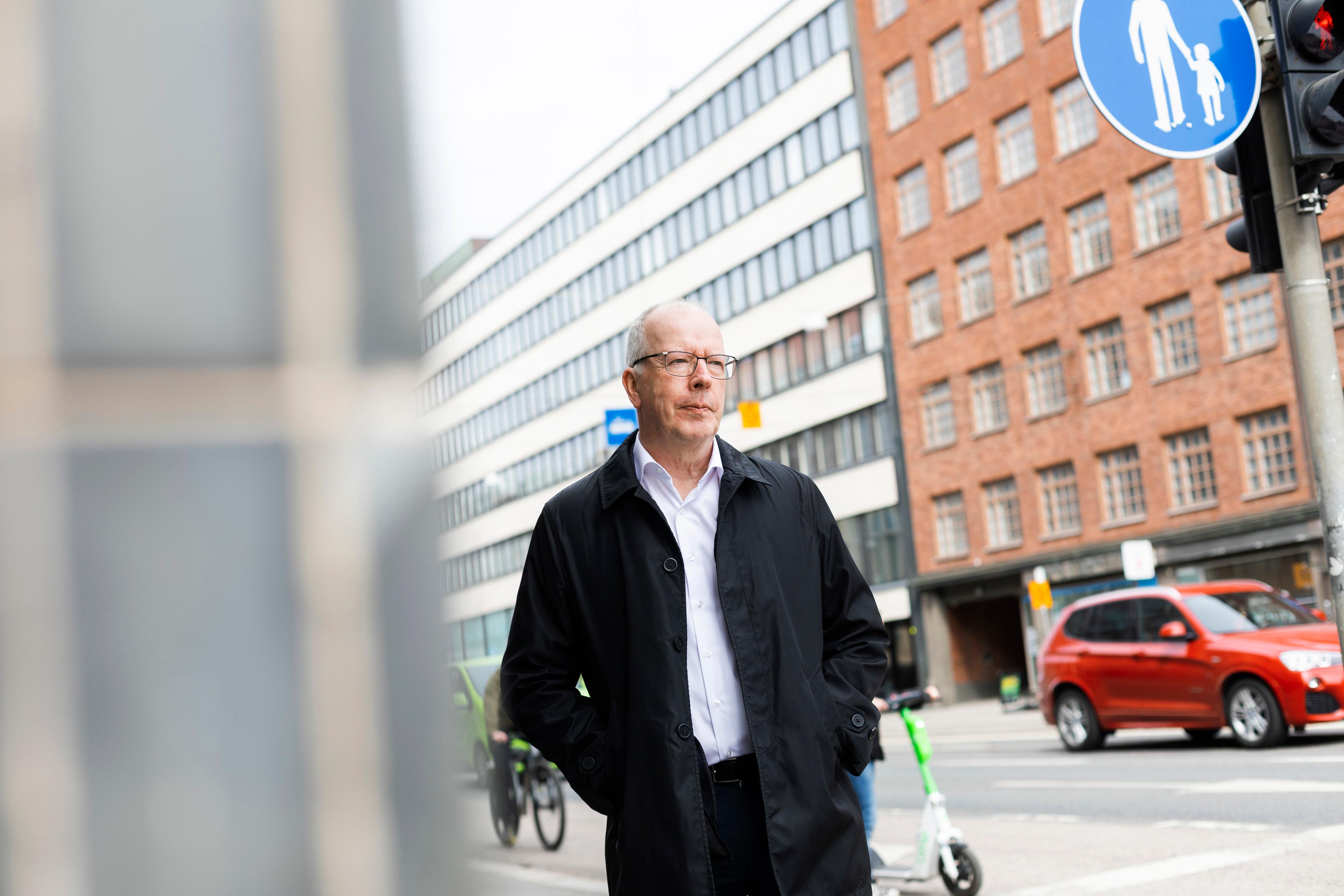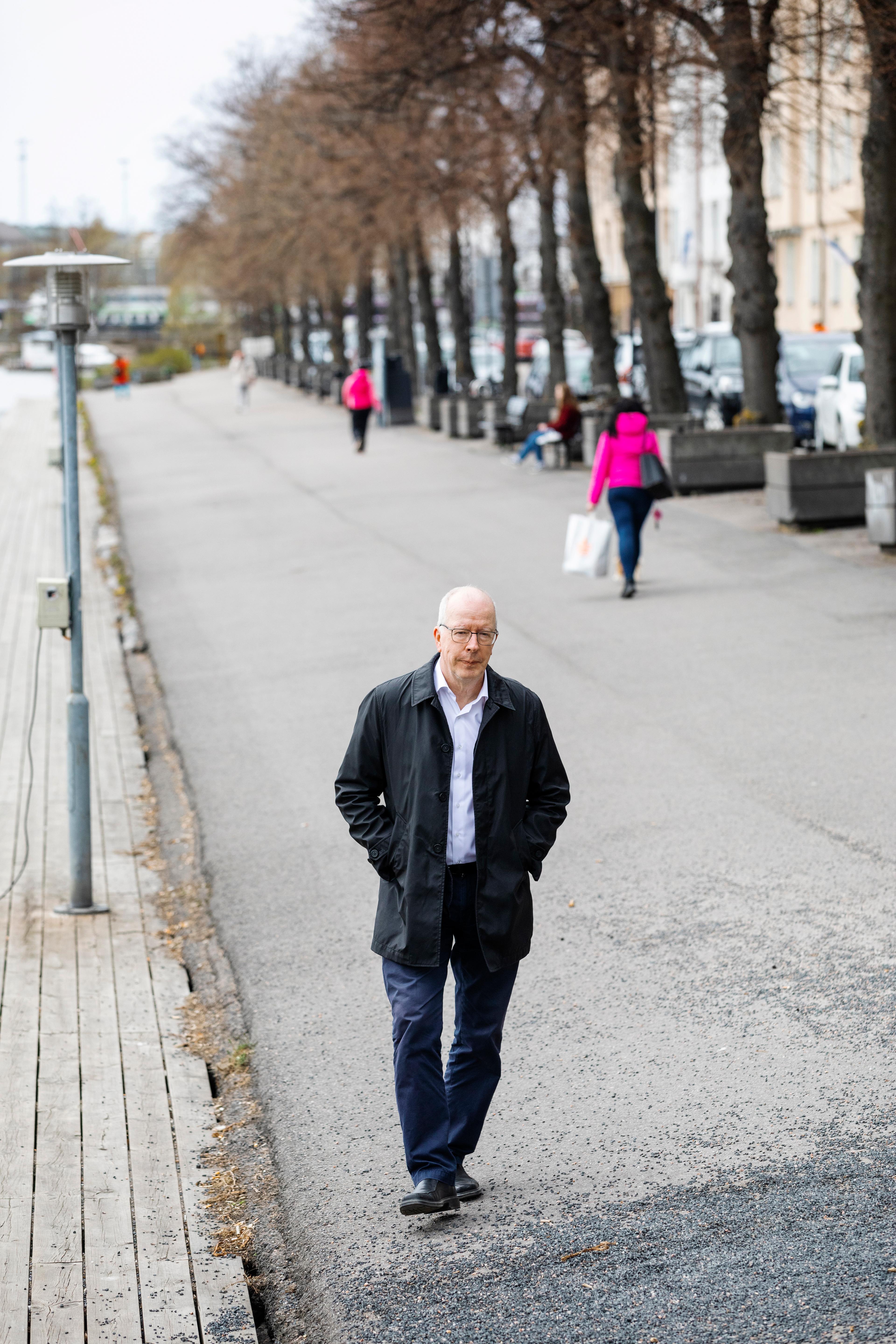Finland is saying goodbye to homelessness: An interview with Juha Kaakinen

Photo by Laura Oja
Interview by Veera Vehkasalo
- News

Finland is the only EU country where homelessness is decreasing. Juha Kaakinen has played a significant role in developing the work undertaken around homelessness since the 1980s: as a civil servant for the City of Helsinki, a member of the group that developed the Housing First approach, and as CEO of Y-Foundation, which offers affordable housing to homeless and low-income people. He says eradicating homelessness is a challenge that can be met.
Iso Numero: The aim of the Sanna Marin government 2019–2023 was to eradicate homelessness by 2027. Is this a realistic goal? [Sanna Marin was succeeded as Prime Minister in June 2023 by Petteri Orpo]
Juha Kaakinen: Yes, it is. We know the ways to make it possible. Homelessness has decreased in Finland, mainly because of a strong political consensus that homelessness is an important human rights issue.
Earlier this year you completed a report completed a report for the Ministry of the Environment on how to achieve this. So, how?
Now that the number of homeless people has decreased, we can say that the majority of the remaining ones have more challenging problems. They need more intensive and longer-lasting support. We must ensure that this support is organised and that resources are allocated for it.
Since 2008, the number of homeless people living alone has decreased by 54 per cent and the number of long-term homeless by 68 per cent. What is the explanation for this?
Above all, the fact is that decreasing homelessness has been prioritised, and the state, officials, municipalities and organisations have been persistently working together. In concrete terms, it has of course meant that a significant number of apartments have been assigned to people and supported living units have been built. The explanation for the progress in the country as a whole is driven by the fact that the numbers of homeless people living alone and long-term homeless in Helsinki have decreased by as much as more than 70 per cent. But more needs to be done in terms of prevention. The best option would be that a situation is not allowed go so far that a person ends up homeless.
How has homelessness changed in recent decades? Has the number of homeless in need of significant support increased?
The picture of homelessness has changed rapidly. In 2008, the target group was still mainly people living in hostels or on the street who were abusing alcohol. Now the core group is made up of socially excluded people with multiple problems and drug addictions. But being homeless is not an attribute of a person; it is a situation they end up in. Currently, many different kinds of situations lead to it. And with the total number of homeless having decreased, there are more people who are in need of more intensive support. When the target is eradicating homelessness, it means that we must be able to get rid of all homelessness, regardless of the reasons behind homelessness or what kinds of problems a person might have. We must find solutions that work. But it is impossible to solve problems without housing, regardless of whether people’s issues are related to health or social care.

Photo by Laura Oja
We must find solutions that work. But it is impossible to solve problems without housing, regardless of whether people’s issues are related to health or social care.
The target was to halve homelessness by 2023 [the government has also made a commitment to completely eradicate homelessness by 2027]. Why has this been unsuccessful?
Good question. Regardless of having found housing and support solutions for people, too many new homeless people have still been appearing. There must be more of a focus on earlier intervention and more intensive support during the process of housing being organised. More support is needed during the transition period. There are good frameworks to ensure a person gets the correct services they need. The importance of an exchangeable and portable principle has been confirmed by the fact that health and social care services in Finland are being widely reformed.
So reducing homelessness remains a challenge, particularly as a result of the current economic situation and the need for reform?
In general, the challenge is within health and social care services. The problem with drug and substance abuse, for example, is a big social issue and only partly affects homelessness. Drug and substance abuse should not be treated as one issue. The problem of homelessness is limited enough now, in terms of its scale, that it can be solved if the will is there. There was a very similar situation in 2008, when the project to reduce long-term homelessness was launched. The economy was crashing pretty badly then too; it wasn’t in any way opportune timing. But when it comes to eradicating homelessness, the timing is always economically opportune, as it pays for itself quickly.
It's clear that you are very optimistic that eradicating homelessness is possible. What feeds your hopefulness?
When I see how many genuinely dedicated people there are in the field. And we have examples of this kind of positive progress being possible. I trust that the decision makers understand the issue, as they have done so far. My perspective on this starts in the 80s, when the situation was quite different. During my career, I have seen such a huge change in the homelessness situation. Because of this, I trust that when the decision is made to eradicate homelessness, it will be possible. The current situation does not require an unreasonable number of resources.
Translated from Finnish via Translators Without Borders
Support our News Service
We believe journalism can change lives, perceptions, and society - underpinning democracy for a more equitable world. Learn more about the INSP News Service and how to support it here.


